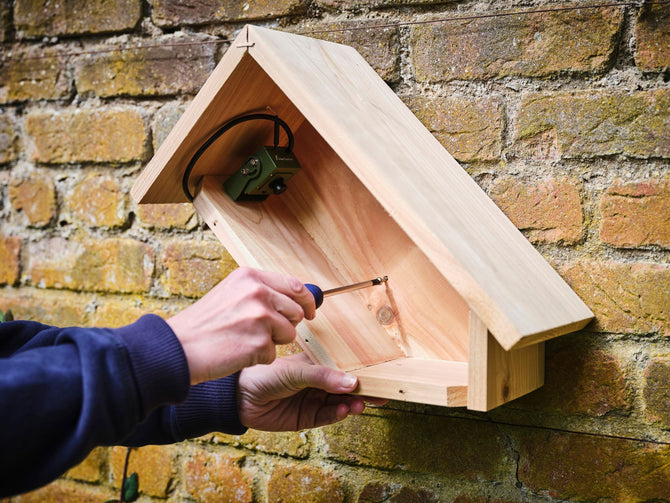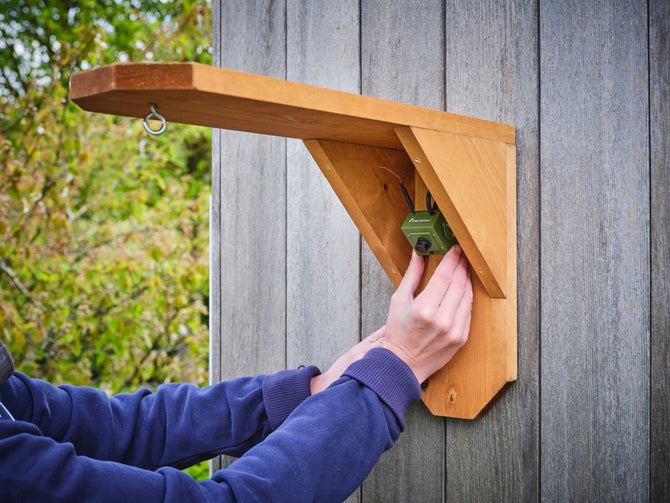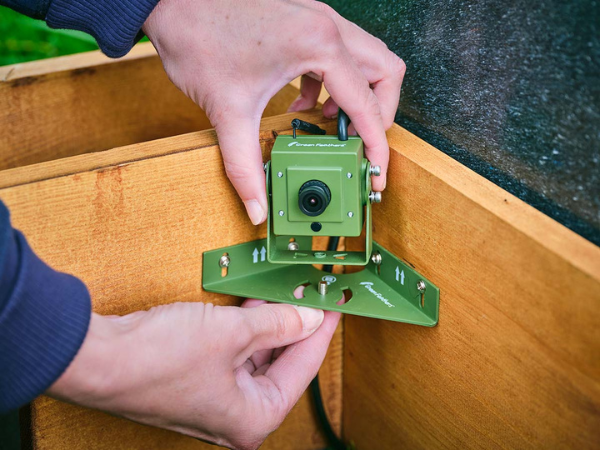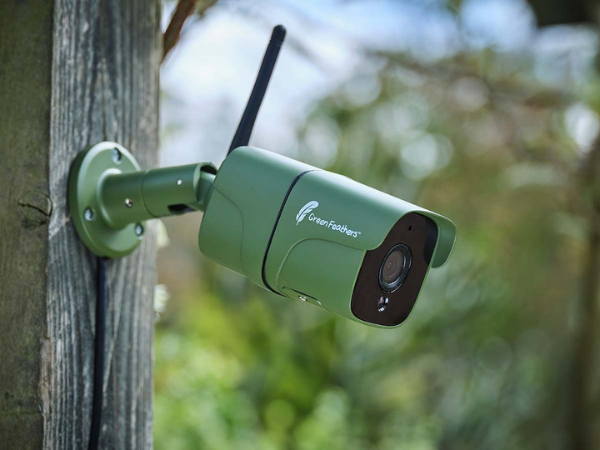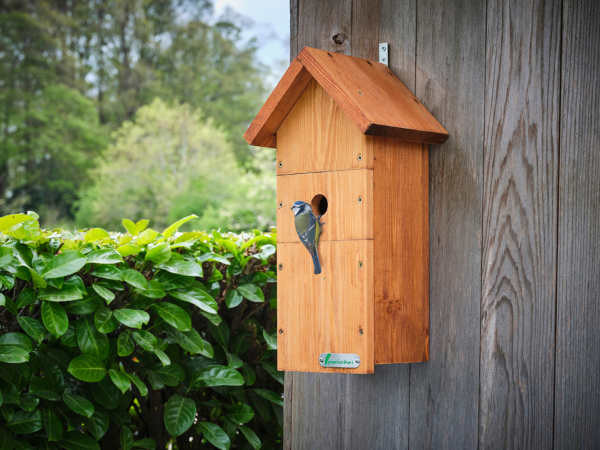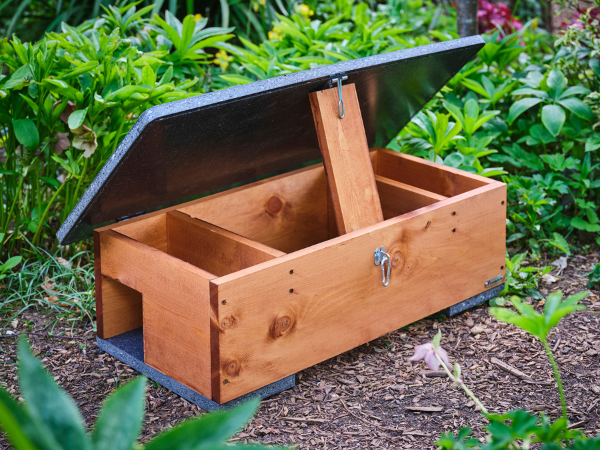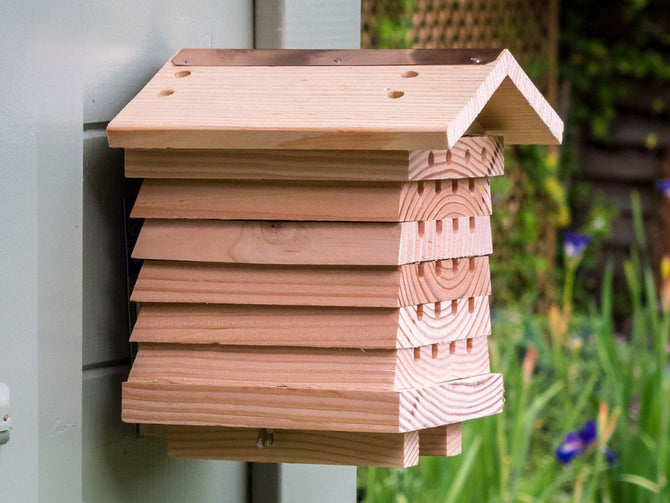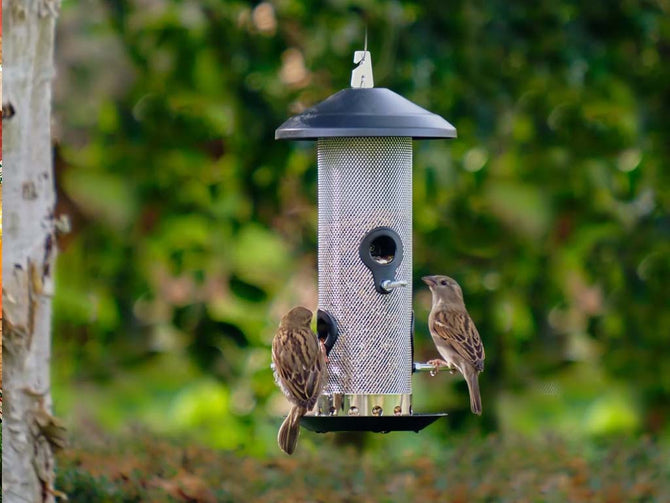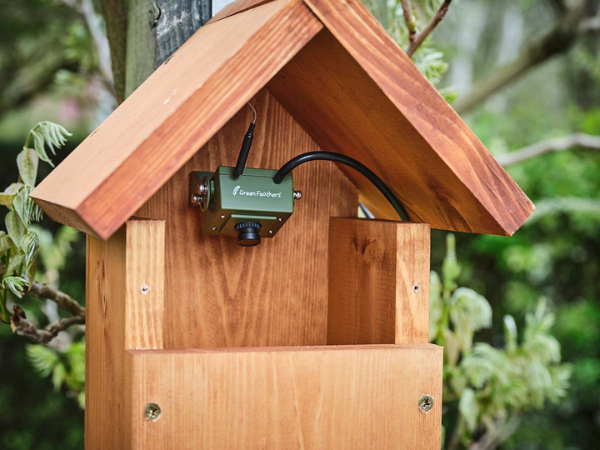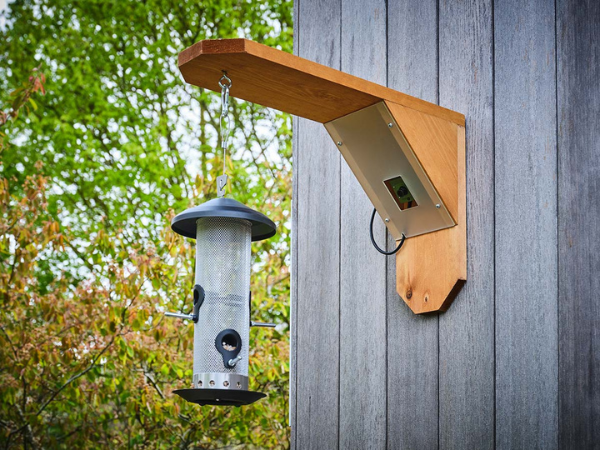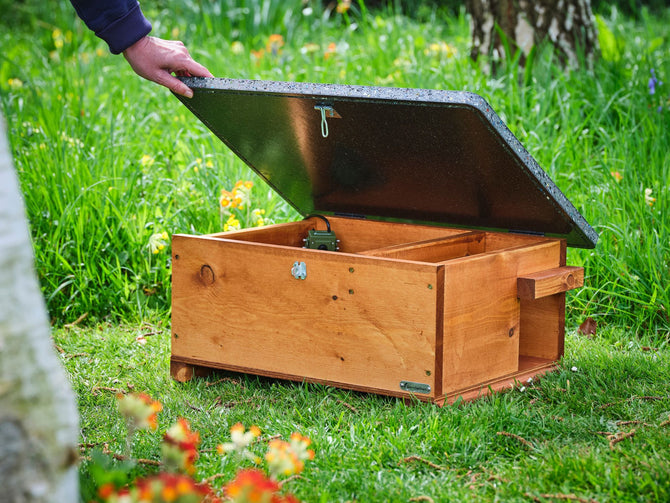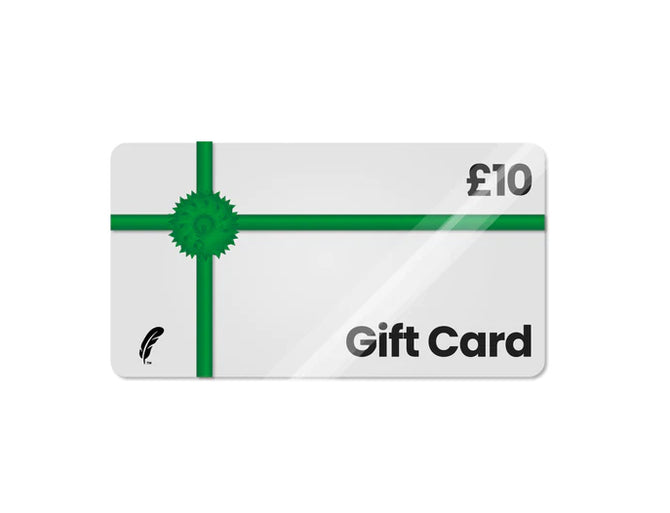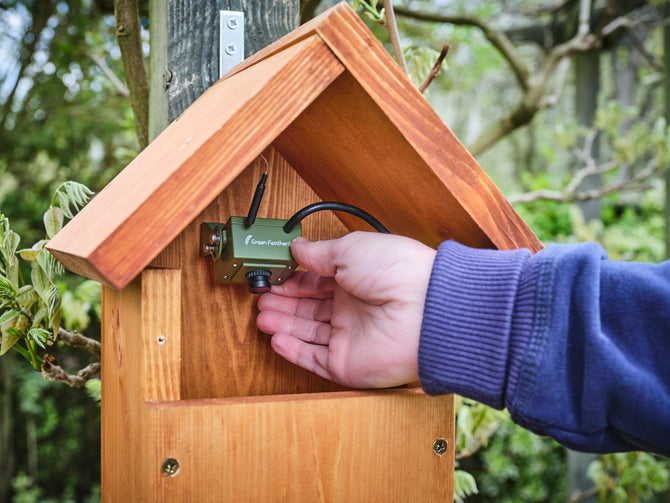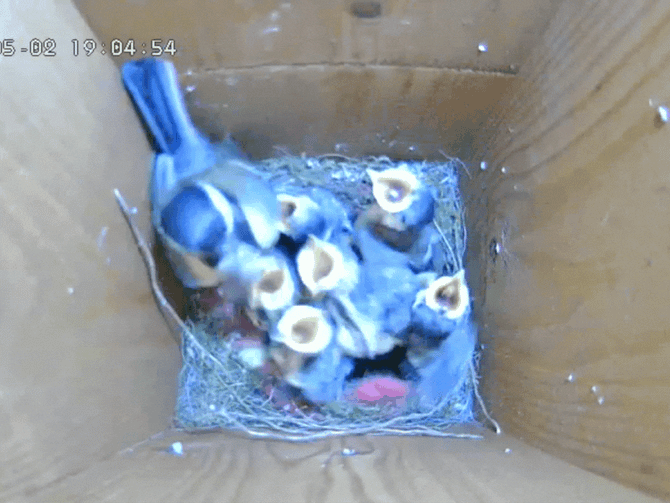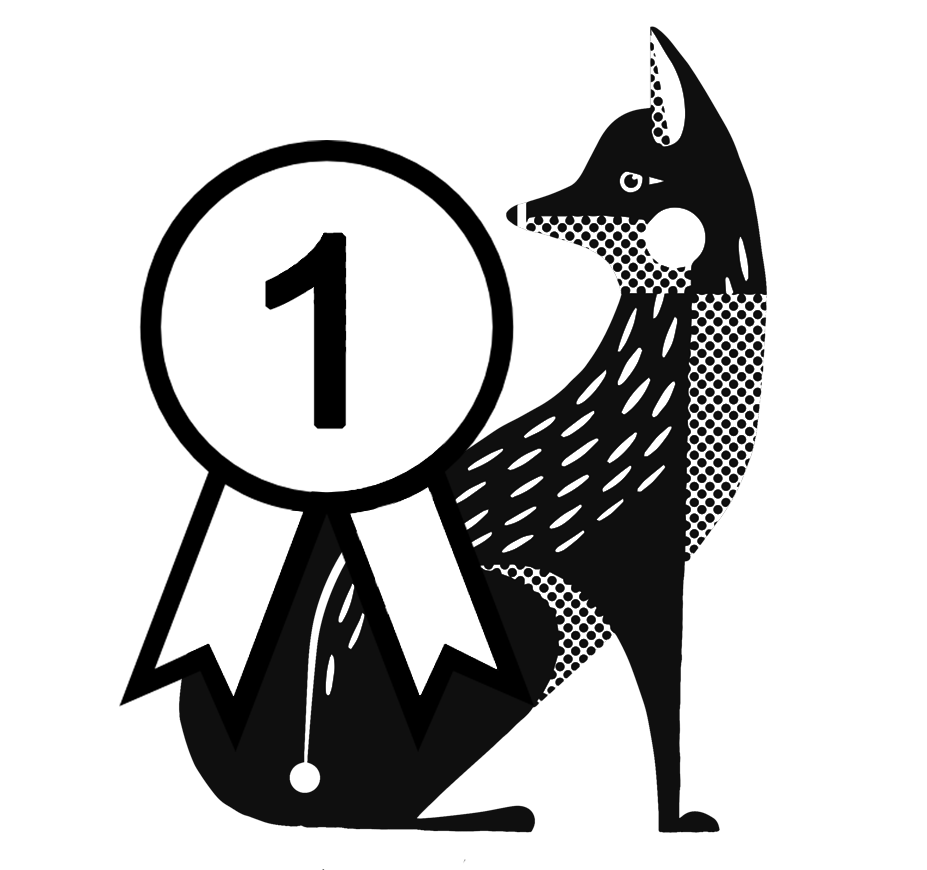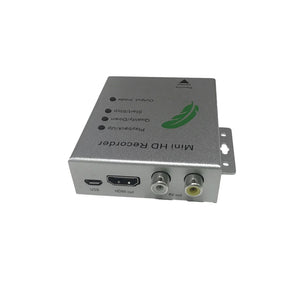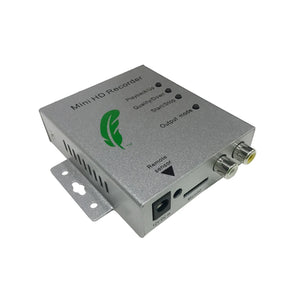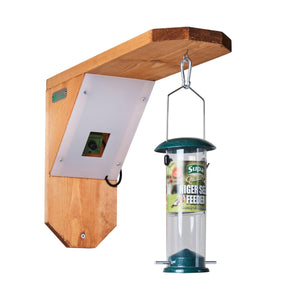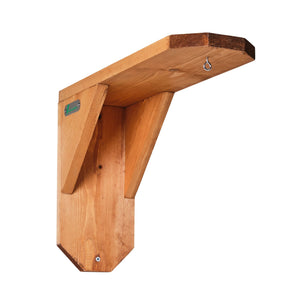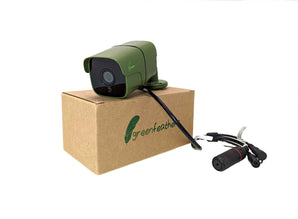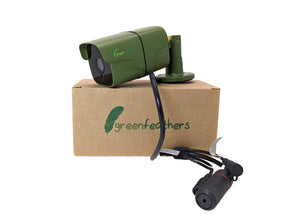A beginner’s guide to birdwatching from your garden
Ever found yourself staring out the kitchen window and thinking - “Is that a house sparrow or a dunnock…?” - then congratulations! You’ve already dipped a toe into the wonderful world of birdwatching. The best part? You don’t need to trek into remote forests or scale windswept cliffs to get started with this fab hobby. Your garden is already a front row seat to the everyday antics of British garden birds!
If you’re keen to get into birding, this beginner’s guide will walk you through all the basics, from how to encourage British birds into your garden to getting to know the most common feathery visitors you’re likely to see.
1. Get some bird feed
Your local birds will happily turn your garden into their favourite café if you lay out the right buffet! If you want a variety of birds, try getting a variety of feed options:
-
Sunflower hearts and sunflower seeds: Many common garden birds enjoy sunflower seeds, including finches, sparrows, robins, and dunnocks. Sunflower hearts are just sunflower seeds with the husk and outer shell removed, making it easier for birds to eat (and creating less mess for you to clean up!)
-
Peanuts: Tits, finches, and even larger birds like woodpeckers all enjoy eating peanuts. It’s really important to use a mesh feeder for peanuts to avoid any choking hazards for your feathered diners!
-
Mealworms: Robins, blackbirds, and wrens all enjoy mealworms. They are not actually worms, but rather the larval form of a type of beetle. You can buy live or dried mealworms for birds, depending on your creepy-crawly tolerance levels!
-
Suet balls: Tits, sparrows, robins, and starlings are among the many birds that love a good suet ball! This is a great addition to your feeder, especially in winter, as it provides a high-energy food source when other resources may be more scarce.
2. Add a bird bath

Birds need water for drinking and bathing! Adding one also makes for another viewing site for you as a birder. Place a shallow dish or bird bath in a quiet, shaded area of your garden. Make sure it’s kept topped up and clean… No one likes a grubby spa!
3. Position feeders & baths strategically
It’s best to place feeders near shrubs or trees so that smaller birds can quickly flit to safety if needed. A feeder or bath that’s out in the open is likely to attract fewer visitors. Try not to place them in spots where any neighbourhood cats can easily ambush either! Lastly, space the feeder and bath a little distance apart so that the water doesn’t splash the feed.
4. Get a pair of binoculars

Okay, now you don’t need any fancy, top-of-the-range binoculars to enjoy birdwatching. An entry-level pair with around 8x magnification will do just fine for zooming in on that cheeky sparrow on the feeder. While you don’t need binoculars to watch birds, it will make it easier to identify different species.
5. Find a good guidebook or app
Having a beginner-friendly British bird guide to hand is a great way to avoid confusing that dunnock and sparrow… (don’t worry, we’ve all been there!) Merlin Bird ID and Collins Bird Guide are both good app options, and for those who prefer old-school, you can’t go wrong with books like the RSPB Handbook or Pocket Guide to British Birds.
6. Keep a bird list
Half the fun of birdwatching is noting down what you’ve seen! Apps like eBird or the RSPB’s birdwatching logbooks let you record sightings, track seasons, and even contribute to national bird surveys. It’s a great way to feel part of the wider British birdwatching community.
Common British garden birds you may meet
Once you’re sorted with the basics, there are a few familiar faces you can expect to see often in your garden. Let’s take a look a some of the most common British garden birds you’ll encounter:
-
Robin: Red-breasted, charming, and familiar.
-
House Sparrow: Social chatterboxes that love feeders.
-
Blue Tit & Great Tit: Energetic and colourful!
-
Blackbird: Sleek black birds with orange bills, known for their melodious song.
-
Goldfinch: Striking red and yellow plumage!
-
Starling: Shiny plumage with speckles.
-
Woodpigeon: Big, bold, and not afraid to hog the feeder!
Want to take your birdwatching to the next level?
Once you’re comfortable with spotting the regulars, or if you’re just really excited to go all in on this awesome pastime, there’s a few extras you can add to get even closer to the action!
Green Feathers has a wide range of wildlife cameras that you can add to one of our bird nesting boxes or feeders, or to a well-chosen spot near your feeder or bath. Our cameras are top-quality, sending high-definition footage straight to your screen of choice, ensuring you can watch nesting activity or day-to-day bird business without a doubt about who’s who!
The cameras are available in wired, wireless, and solar-powered options, so you can find the perfect fit. Head over to our online store to shop the range and take birding in your garden to the next level!
FAQs
What is birdwatching?
Birdwatching (or birding) is the practice of observing birds in their natural environment for fun, relaxation, or study. It can be as simple as spotting garden robins or as adventurous as travelling the world in search of rare species.
How to start birdwatching?
Start small, right in your garden. Get a pair of binoculars, put out bird feeders and water, and keep a notebook or app handy to record what you see. Over time, you’ll learn to recognise species by sight and sound.
Best binoculars for birding?
For beginners, binoculars with 8x magnification are ideal. There are plenty of affordable, lightweight models that are perfect for garden birdwatching.
What do British garden birds eat?
They eat a mix of seeds, nuts, insects, and fruit. Providing sunflower seeds, suet, and mealworms will attract a wide variety. Different birds have different favourites!
How to identify British garden birds?
Look for colour, size, behaviour, and song. A good guidebook or app can make ID much easier!
Ready to start birding?
Birdwatching from your garden is one of life’s simplest pleasures. With a little food, water, and patience, you’ll enjoy a parade of British garden birds right on your back doorstep! So grab those binoculars, top up the feeder, and join the British birdwatching community today.
If you’re ready to add some tech to your birdwatching, head over to our website to find out more about our birding camera solutions!

